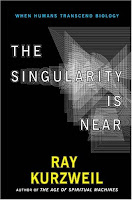Habermas’s constellation of arguments here are specific to a set of concerns that had already in another more controversial and related context pitted Habermas contra Sloterdijk’s infamous Elmau lecture, Rules for the Human Zoo.
See Sloterdijk, Regeln für den Menschenpark. Ein Antwortschreiben zu Heideggers Brief über den Humanismus (Frankfurt am Main: Suhrkamp, 1999) but see too his interview with Erik Alliez, “Living Hot, Thinking Coldly: An Interview with Peter Sloterdijk,” Cultural Politics, Vol. 3, Iss. 3 (2007): 307-326.
Here the obvious merits attention, and not just because what one takes to be “obvious” is often less well known than one supposes. For Habermas’s opposition to Nietzsche and a range of other thinkers in a broad swath tends to include Martin Heidegger but also Hans-Georg Gadamer and Jacques Derrida, and latterly Sloterdijk, and if Sorgner is not careful here, Sorgner himself (not that this is not a great set of companions in thought).
For his own part, Sloterdijk himself concurs to the extent that he recommends that we read otherwise esoteric cybernetic theorists like Gotthard Günther, notably his 1963 book, The Consciousness of Machines: A Metaphysics of Cybernetics.
NB: Inasmuch as Günther was employed by several US government agencies, Günther’s Das Bewusstsein der Maschinen (Krefeld-Baden Baden: Agis Verlag, 1957) is at least accessibleartli in part in English, e.g.—and especially note the science fiction locus—“Can Mechanical Consciousness Exist,” Stng Stories, Vol. 29, No.1 (1953): 110-116. Contemporary scholars may find this reference of interest more because of a hoped for resonance, say with Simondon rather than anything else or else owing to an interest in Ray Kurzweil’s mystical vision of technology in his The Singularity is Near: When Humans Transcend Biology(Hassocks: Penguin, 2006). A product in a consummate fashion of the last century and dying in the Orwellian year of 1984, Günther, an enthusiastically pro-American German could not have been less Orwellian. He is worth our attention as a useful guide to what might have been hoped for as a result of possible logics in the wake of Gödel’s challenge to the same and Gödel was interested in Günther’s Idee und Grundriss einer nicht-Aristotelischen Logik (Hamburg: Meiner, 1959). But see too Jean-Pierre Dupuy, The Mechanization of the Mind (Princeton: Princeton University Press, 2000).
Günther himself, a German-American systems thinker, echoes an audaciously technological optimism which we may recognize as sympathetic to Sorgner’s transhumanism. As Sloterdijk explains it, we find in Günther’s work
the concept of a “formless matter” [that] embodies … all that’s been thought between Hegel and Turing on the relation of “things” to “mind.” It tests out a trivalent—or multivalent—logic that’s so potent it could rid us of the impotent, brutal binarism of the mind/thing, subject/object, idea/matter type… Sloterdijk with Alliez, “Living Hot, Thinking Coldly,” p. 318.
I should add that it matters here that Sloterdijk also recommends the cybernetician, in today’s terms, the theoretical neuroscientist, Warren McCulloch, who was “junior,” as Sloterdijk reminds us, helping us keep our time consciousness here, to Norbert Weiner.
McCulloch was author of Embodiments of Mind (Cambridge, MA: MIT Press, 1965).
One does well to consult, if one were in need of such an idealization (as one is hardly in need of such these days) od cybernetics, here qua proto-cognitive science, and psychology, including a passing swipe at psychiatry (the latter as much for its circularity as its cupidity), McCulloch’s The Past of a Delusion (Chicago: Chicago Literary Club, 1953).
McCulloch trained as a physician and studied psychoanalysis with Ferenczi, challenges Freud’s unconscious in economic terms, rather as Adolf Grünbaum has sought to do in related ventures in the Pittsburgh tradition of the philosophy of science.
Where McCulloch supposed that one needed to integrate new understandings into the account of the mind, suggesting that one
“contrast Freud’s delusion with the sad humility of Sherrington, who though he knows more physiology of brains that any other Englishman, admitted that for him in this world, Mind goes more ghostly than a ghost.” (21-22)
McCulloch’s real objection turned upon the foundation of what he called Freud’s delusion (and thus the title of McCulloch’s essay), i.e., and shades again of Grünbaum, psychoanalysis:
“One of the cornerstones of Freud’s delusions is that we forget no single jot or tittle of what at any time has happened to us. By calculations that began naïvely with the senior Oliver Wendell Holmes and are today best handled by the physicist von Förster, man’s head would have to be about the size of a small elephant to hold that much. His body could not eat enough to energize its mere retention even if we suppose a single molecule of structuring protein would serve as trace. Actually the mean half-life of a trace in human memory, and of a molecule of protein, is only half a day. Some few per cent of engrams do survive, presumably because we recreate the traces in our heads, but that is all fate leaves us of our youth. Where written words remain to check our senile recollections they often prove us wrong. We rewrite history, inventing the past so it conforms to present needs. We forget, as our machines forget, because entropic processes incessantly corrupt retention and transmission of all records and all signals. Partly because all men, when pushed, fill in the gaps of memory, partly because hysterics and neurotics generally are most suggestible, Freud’s so-called findings of repressed unconscious stuff rest on confabulation, perhaps his patients; but where the free associations and the dreams are both his own, there cannot be a question but that Freud did the confabulating.” (23)
Psychoanalysis and its neuronal contents to one side, to this day, there is nothing like cybernetics and systems theory and its allure has animated the military industrial world, especially but not only in the United States.
























